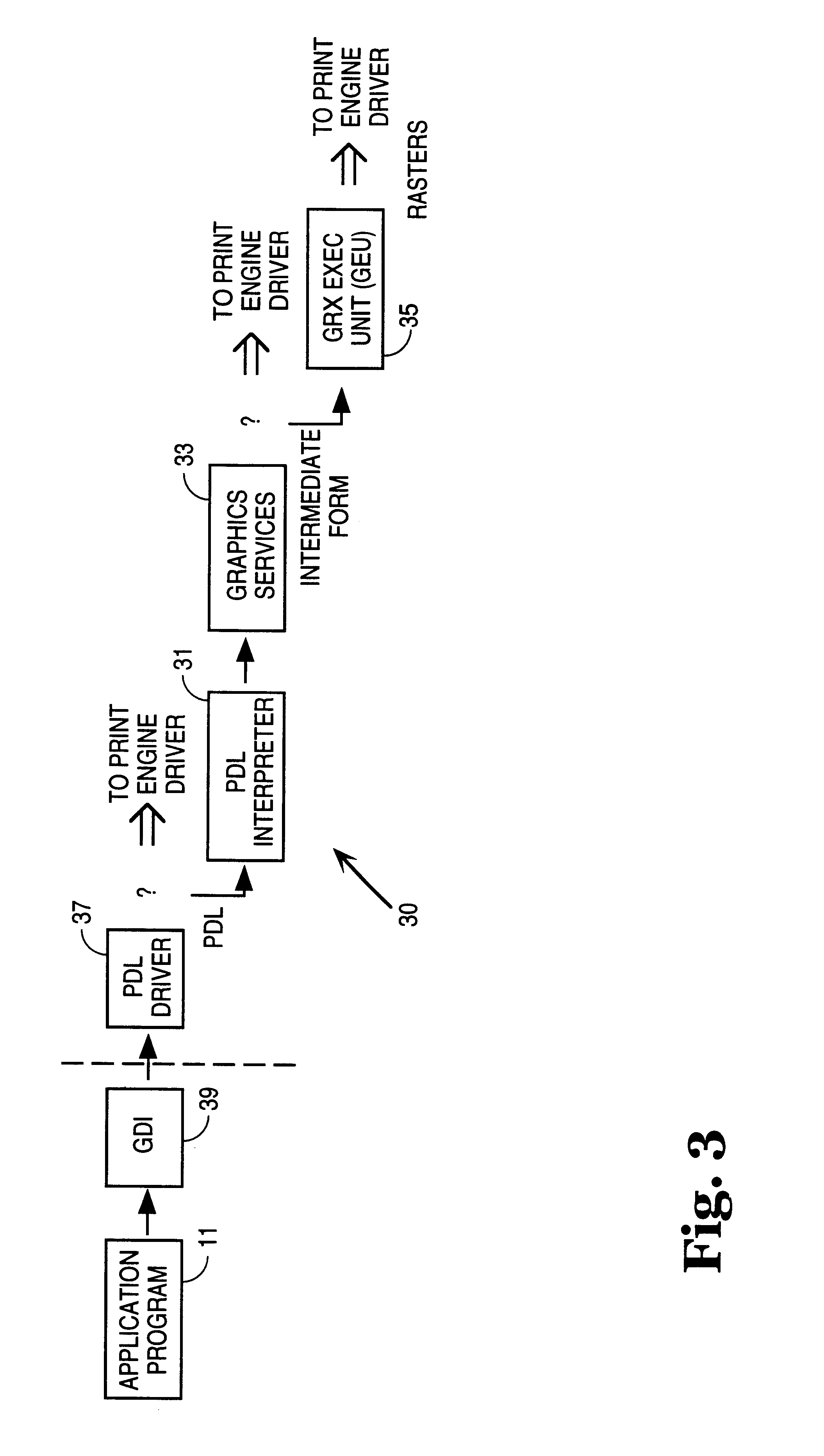Method and apparatus for selecting print strategy for optimal performance
a print strategy and optimal performance technology, applied in the direction of digital output to print units, visual presentation using printers, instruments, etc., can solve the problems of slow printing, prior art printing methods do not have the ability to use different printing models for printing different kinds of data, and slow printing, so as to reduce the amount of data and the effect of fast host processor
- Summary
- Abstract
- Description
- Claims
- Application Information
AI Technical Summary
Benefits of technology
Problems solved by technology
Method used
Image
Examples
Embodiment Construction
[0057]There are three aspects of the operation of the invention:[0058]1. Establishment of selection criteria[0059]2. Data analysis methodologies[0060]3. Driver internal structure and design.
[0061]1. Establishment of Selection Criteria
[0062]The user is provided an interface to tell the driver how to select a print model. The interface contains several possible selection criteria as follows:
[0063]“Automatic” Mode
[0064]The user selects this mode to let the driver choose what it thinks is the best printing model. In this case the driver's highest priority in making the selection is print quality. Any resource shortage (typically in the printer) that would result in loss of data and degraded quality causes processing to move to the other side (typically to the host). Note that as long as the printer (or host) contains enough memory to store an uncompressed full-page image in memory, then image degradation is not a possibility.
[0065]The driver's second priority is print speed. Using the a...
PUM
 Login to View More
Login to View More Abstract
Description
Claims
Application Information
 Login to View More
Login to View More - R&D
- Intellectual Property
- Life Sciences
- Materials
- Tech Scout
- Unparalleled Data Quality
- Higher Quality Content
- 60% Fewer Hallucinations
Browse by: Latest US Patents, China's latest patents, Technical Efficacy Thesaurus, Application Domain, Technology Topic, Popular Technical Reports.
© 2025 PatSnap. All rights reserved.Legal|Privacy policy|Modern Slavery Act Transparency Statement|Sitemap|About US| Contact US: help@patsnap.com



